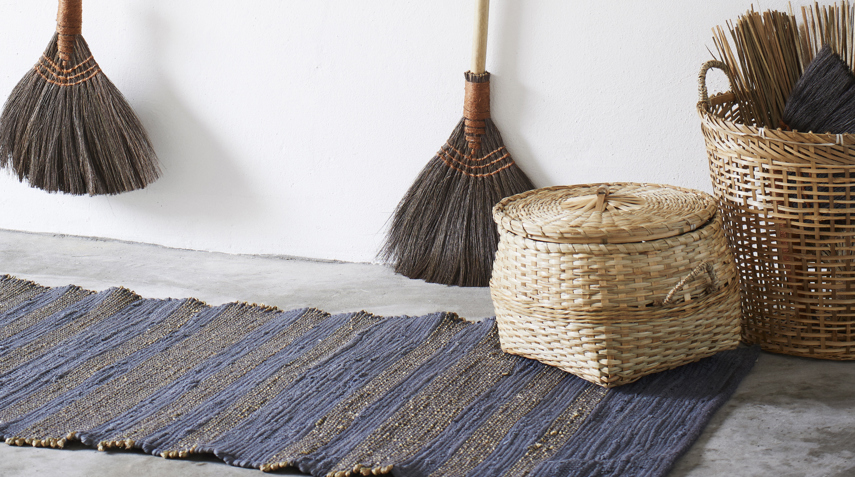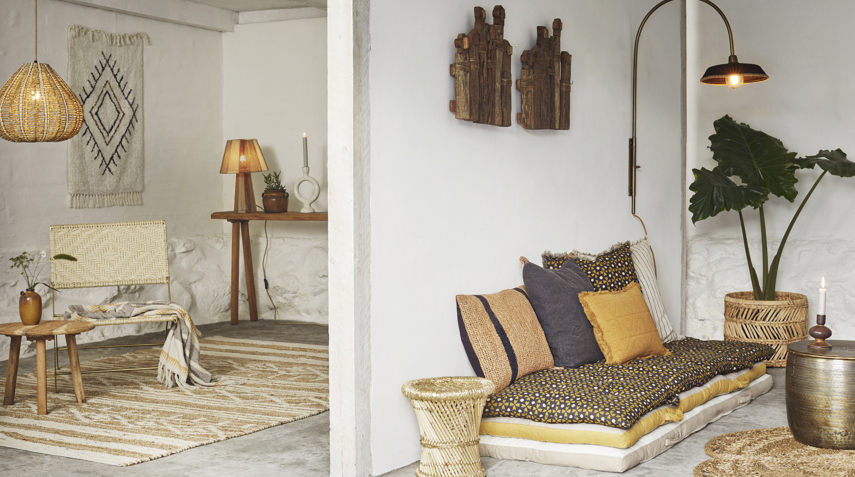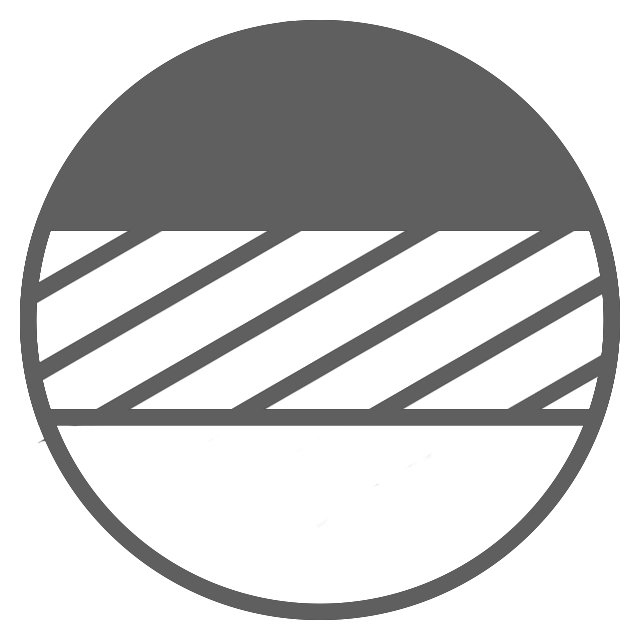Seagrass rugs ground a room with natural elegance and quiet strength. Handwoven by artisans, they bring subtle shifts of tone and texture, blending durability with timeless style. Practical and low-maintenance, they suit both modern and traditional spaces while adding warmth and authenticity.

Embrace Seagrass Charm with Handcrafted Rugs
Most rooms feel better when they have a natural anchor point. A seagrass rug has a way of grounding a space with calm, tactile presence, while introducing a subtle glow that changes with the light. It looks simple, yet the closer you get, the more detail you notice, from tight V-shaped weaves to gentle bands of colour that shift from olive green to honeyed tan with age.
This is practical beauty. It is also craft with a human heartbeat.
What gives seagrass its quiet strength
Seagrass is a salt-water sedge, not a true seaweed, and its fibres carry traits that make superb floorcoverings.
- High silica content gives the strands exceptional tensile strength, so they withstand abrasion and heavy use.
- The fibres are naturally waxy and non-porous, which means liquids tend to sit on the surface. Spills are less likely to soak in, and stains have a hard time taking hold.
- Fresh, unprocessed seagrass starts life green, then mellows to warm golds and browns. That slow shift creates a gentle patina that blends with timber, stone and painted walls.
- A soft sheen sits on the surface, more like polished straw than a fuzzy pile. It reflects light just enough to look lively without shine.
- Underfoot, seagrass feels firm and cool, smoother than sisal yet sturdier than jute. There is no fluff to shed, no pile to crush.
Over years of use, a good seagrass rug retains its shape, the weave tightens, and colour deepens. It wears in, not out.
Handwork that shows
Behind each rug sits a chain of patient steps, many of them outdoors. Stands of seagrass are harvested by hand, bundled, and sun-dried. The timing matters. Dry too fast and the colour goes sallow, too slow and it can mildew. Skilled makers split the stalks into even ribbons, then twist, braid or leave them flat depending on the weave.
Common patterns include:
- Basketweave for a consistent, structured grid
- Herringbone for movement and visual rhythm
- Flat braids coiled in spirals for round or oval mats
- Tight flat-woven textures with V-shaped ridges
In Vietnamese villages like Nga Son and Kim Son, and across Indonesian islands from Lombok to Bali, women artisans lead this work. They prepare fibres, align strands, and build each rug section by section on simple looms. Slight variation is not a flaw. A minor change in strand thickness, a faint band of tone where one bundle finishes and another begins, the way a corner turn reveals the weaver’s hand. These are the marks of authenticity that machine looms struggle to imitate.
Handmade or machine-made
Machine-made seagrass carpets do exist, though less commonly than synthetics or wool. They are easy to spot. The colour looks uniformly flat, the repeat is exact, and a latex or jute backing holds the structure together. This brings consistency, but the adhesives can break down over time and are not kind to damp floors.
Handwoven pieces have life. Texture is subtly irregular, colour shows pleasing shifts, and the rug relies on fibre tension rather than a synthetic glue layer. That tends to age better, often for decades if the rug is rotated and kept dry. Many buyers now seek that lived-in character, both for the look and the story it brings into a room.
Where seagrass shines at home
Natural seagrass sits comfortably in many styles. London terraces with painted shutters, barn conversions with limewashed beams, city flats pared back to concrete and crisp joinery. It reads as neutral yet never bland.
- Coastal and farmhouse schemes gain texture without heaviness.
- Scandinavian and Japandi rooms pick up the organic lines and the calm palette.
- Modern spaces use seagrass to soften glass, metal and crisp plaster.
- Boho interiors love the woven pattern and the earthy warmth.
Practical placement ideas:
- Living rooms with medium to heavy footfall. It handles traffic well.
- Dining areas. Chairs slide easily across tight weaves, and food spills are less drama on a fibre that does not drink.
- Hallways and entryways. Tough, flat, tidy.
- Bedrooms if you prefer a cooler, firmer feel underfoot, softened with a wool runner beside the bed.
One more styling note. Seagrass makes a superb base layer. Put a patterned wool kilim or a colourful dhurrie on top to bring in colour and artwork-like detail, while the seagrass provides scale and definition.
Care that fits a busy life
The low-maintenance reputation is well earned, provided moisture is managed.
Daily and weekly care:
- Vacuum with the beater bar off or on low height. Multiple passes collect grit from the valleys of the weave.
- Rotate the rug every few months to even out sunlight and traffic.
Spill protocol:
- Blot, do not rub. Use a clean, absorbent cloth to lift liquid before it spreads.
- Follow with a light wipe using a barely damp cloth, then dry quickly with airflow.
- For odours, a tiny sprinkle of bicarbonate of soda after drying can help, then vacuum.
Helpful extras:
- Use a quality underlay to soften feel and prevent sliding. Natural rubber or felt works well.
- Keep it away from bathrooms, wet rooms and persistently damp basements. Prolonged moisture risks mildew.
- If edges begin to curl, lightly mist the back of the curled area, lay the rug flat, then weigh the edge until fully dry.
- Pets are usually fine on seagrass. The fibre resists stains and does not invite scratching like shaggy piles do.
Professional wet cleaning is not recommended. Too much water can distort the weave and promote mould. Stick to dry methods and careful spot treatment.

How it compares with other favourites
No single rug material suits every need. This quick comparison helps refine choices.
|
Material |
Feel and look |
Strengths |
Watch outs |
Typical lifespan |
|---|---|---|---|---|
|
Seagrass |
Firm, cool, flat-woven, with a subtle sheen and natural greens-to-golds |
Highly resistant to wear, naturally resists stains and light spills, ages gracefully, low shed |
Does not like soaking, limited dye colours, can curl at edges if damp |
7 to 10 years in busy homes, longer in lighter use |
|
Wool |
Soft, springy, plush or looped, takes colour beautifully |
Exceptional resilience, warm underfoot, naturally flame safe |
Absorbs liquids, can show water marks if not blotted fast, may fuzz in traffic lanes |
Decades with care |
|
Cotton |
Soft, fabric-like, often flat-woven and casual |
Washable for smaller sizes, bright colours possible |
Wears faster in doorways and dining zones, stains easily, can mildew |
3 to 8 years |
|
Jute |
Coarser, braided or herringbone, rustic neutrals |
Affordable, earthy texture, low static |
Absorbs water quickly, sheds a little, not for damp rooms |
5 to 7 years |
|
Synthetic (nylon, polyester) |
Almost any look, from plush to flat, vivid patterns |
Very durable, stain resistant, easy to wash or steam clean |
Can feel less natural underfoot, may build static, made from petrochemicals |
10 years or more |
Cost-wise, seagrass usually sits in the middle. It is often cheaper than wool for the same size, comparable to jute, and pricier than many synthetics or basic cotton. The value lies in robust performance, the natural look that works across styles, and the way it wears in without fuss.
Why designers choose it again and again
Performance is only half the story. The other half is how a seagrass rug changes the mood of a room.
- Texture without visual noise. The weave lifts a space, yet the palette stays calm.
- Light play. That faint polish brings a low-gloss sparkle that freshens dark corners.
- Scale. A generous flat weave helps spaces feel larger and more composed.
- Honest material. You see what it is, and you can feel the handwork.
That honesty reads as luxury in a quiet way. It never shouts. It improves everything around it.
Environmental benefits you can feel good about
Choosing natural seagrass connects your home to living coastlines. Seagrass meadows are among the most efficient carbon sinks on the planet. They stabilise sediments, shelter fish and turtles, filter impurities from water, and protect shores. Harvesting for rugs typically uses hand methods in shallow paddies and tidal flats, which keeps machinery off sensitive soils and allows roots to remain for rapid regrowth.
There is also the afterlife to consider. Unlike nylon or polyester, which can sit in landfill for decades, a seagrass rug returns to the soil. It is biodegradable and usually produced without harsh chemical finishes. The raw material stores carbon during growth, and the making process relies on sun and air more than fossil energy.
For anyone trying to reduce synthetic content at home, seagrass is an easy win.
Craft, livelihoods and cultural continuity
In many coastal regions of Vietnam and Indonesia, seagrass weaving is a pillar of village life. The knowledge of when to cut, how to split fibres, how long to sun-dry, and how to work patterns is passed down through families, often from mothers and grandmothers to daughters.
Buying handwoven seagrass supports:
- Income for rural households that might otherwise rely on seasonal farming alone
- Women-led micro enterprises and cooperatives
- Preservation of regional techniques that would be lost if the craft dwindled
- Incentives to keep meadows healthy and harvest responsibly
Look for makers and brands that share sourcing details, support fair wages, and invest in training. Some producers hold ethical trade certifications, and many small workshops follow strong community standards even without a formal badge.
How to specify a seagrass rug with confidence
A few decisions make all the difference between a good purchase and a great one.
Size and proportion
- In living rooms, leave 20 to 30 cm of floor showing around the rug for a framed look. If your room is large, take the rug under the front legs of seating.
- In dining rooms, add at least 60 cm beyond the table edge so chairs stay on the rug when pulled out.
- In hallways, keep generous margins at the skirting so the runner reads intentional, not squeezed.
Weave and thickness
- Basketweave suits minimal interiors and busy traffic, very tidy and flat.
- Herringbone adds movement and interest under plain furniture.
- Braided coils work nicely for round tables and reading corners.
- Thicker weaves feel a touch softer but consider door clearances.
Backing and borders
- Handwoven rugs without synthetic backings tend to breathe better and last longer. If you choose a backed option, avoid cheap latex that can perish.
- Cotton or linen binding is classic. Leather bindings add a tailored edge in smart interiors. If you prefer no border, ask for a turned and stitched edge.
Underlay
- A quality underlay improves comfort, reduces slippage, and protects floorboards. Choose a material that does not mark finishes.
Colour and layering
- Seagrass does not take dye well, which is part of its charm. Embrace the green-to-gold palette and layer smaller colourful rugs if you want pattern.
Stairs
- Seagrass can be used on stairs when installed by a pro, with the weave aligned parallel to the treads. Add a good underlay and secure edges cleanly to avoid snags.
Quick answers to common questions
Is seagrass scratchy
- No, it is firm but smoother than sisal. Many people prefer it barefoot to jute, which can feel coarser.
Does it smell of the sea
- Fresh rugs may carry a faint grassy scent at first, which fades within days as the fibres air out.
What about pets and children
- The flat weave resists claws and does not trap fur easily. Wipe accidents quickly, allow to dry, and you are unlikely to see lasting marks.
Can I use it in the kitchen
- Yes in most cases, provided the area is not constantly wet. Place mats near sinks and dishwashers, and dry spills quickly.
How do I deal with a stubborn mark
- Let damp areas dry, then lightly brush the fibres in the direction of the weave. Avoid saturating the spot. If needed, a specialist in natural fibre rugs can perform a dry clean.
Design ideas to try
- Layer a narrow patterned runner on top of a wide seagrass runner in a corridor for depth.
- Use a round seagrass mat beneath a hanging chair to protect floors and visually anchor the spot.
- Frame a seagrass rug with a dark leather border in a smart library or study. The contrast looks handsome against bookshelves.
- Pair seagrass with linen upholstery, clay pots and matte black metal for an easy, timeless mix.
Seagrass rugs bring together performance, craft and an unfussy elegance that suits how people live today. They are easy to love on day one, and even easier to appreciate after years of use. When a rug can handle family life, flatter a room, support coastal ecosystems and sustain skilled makers, it earns its place.





